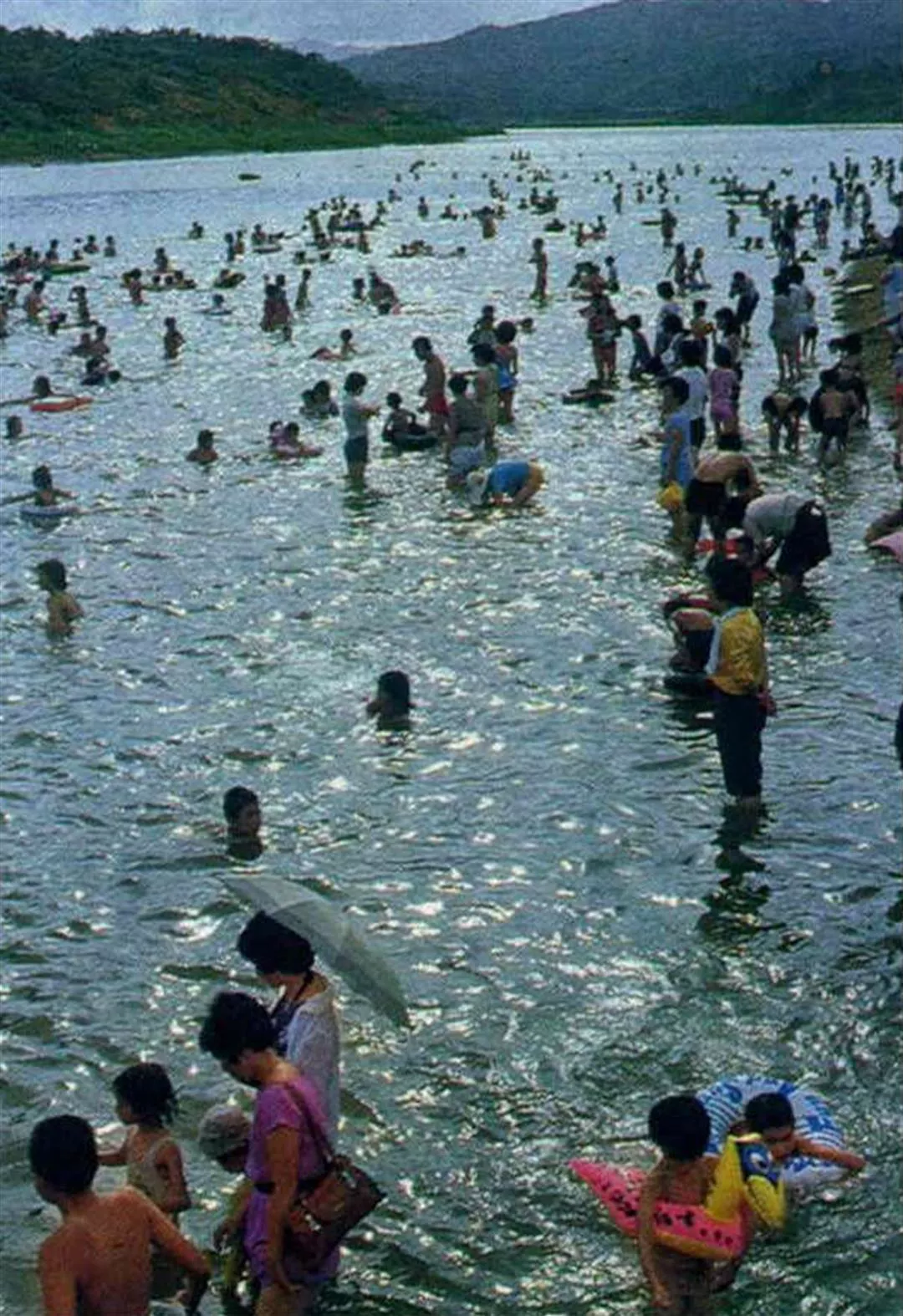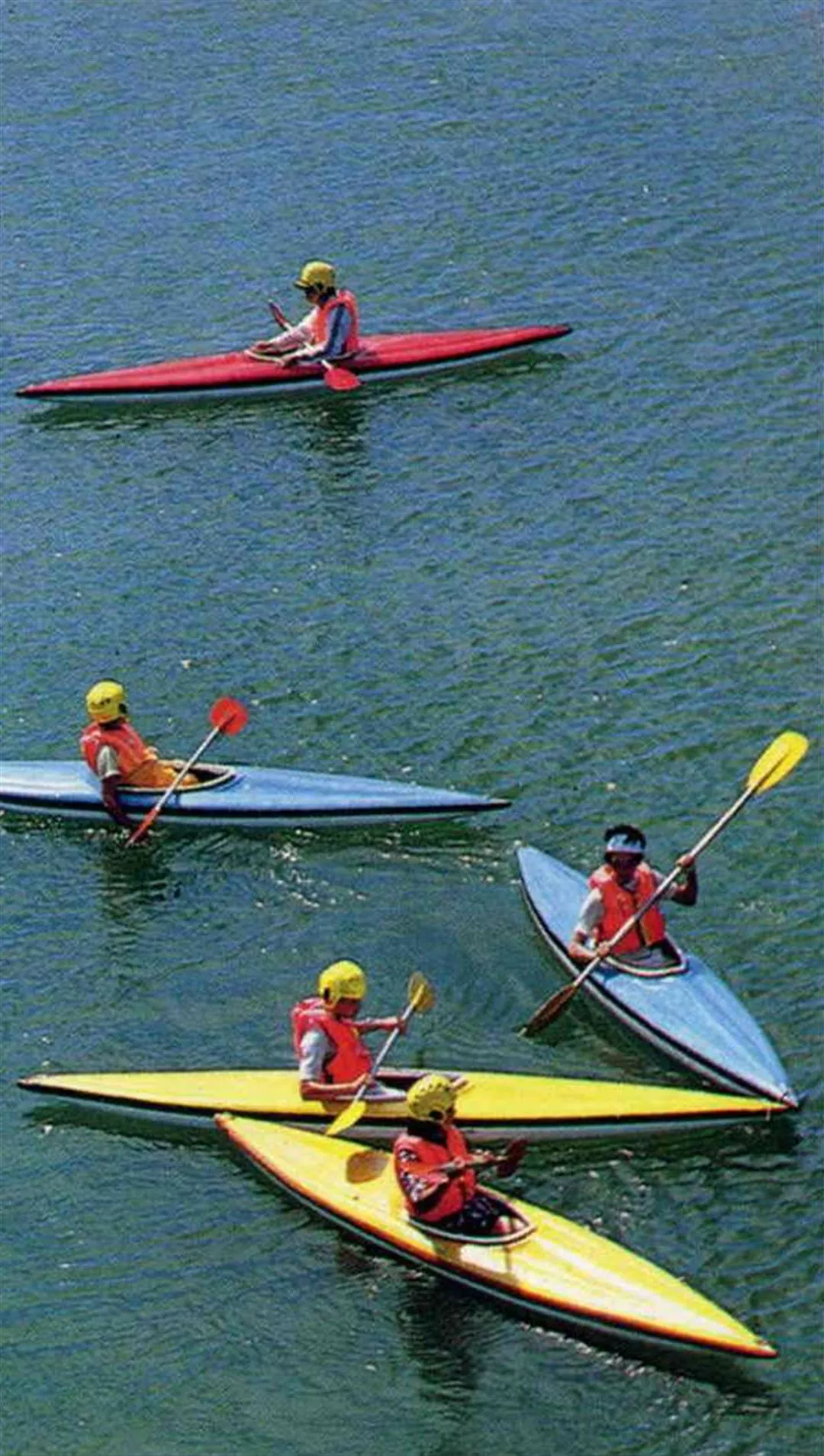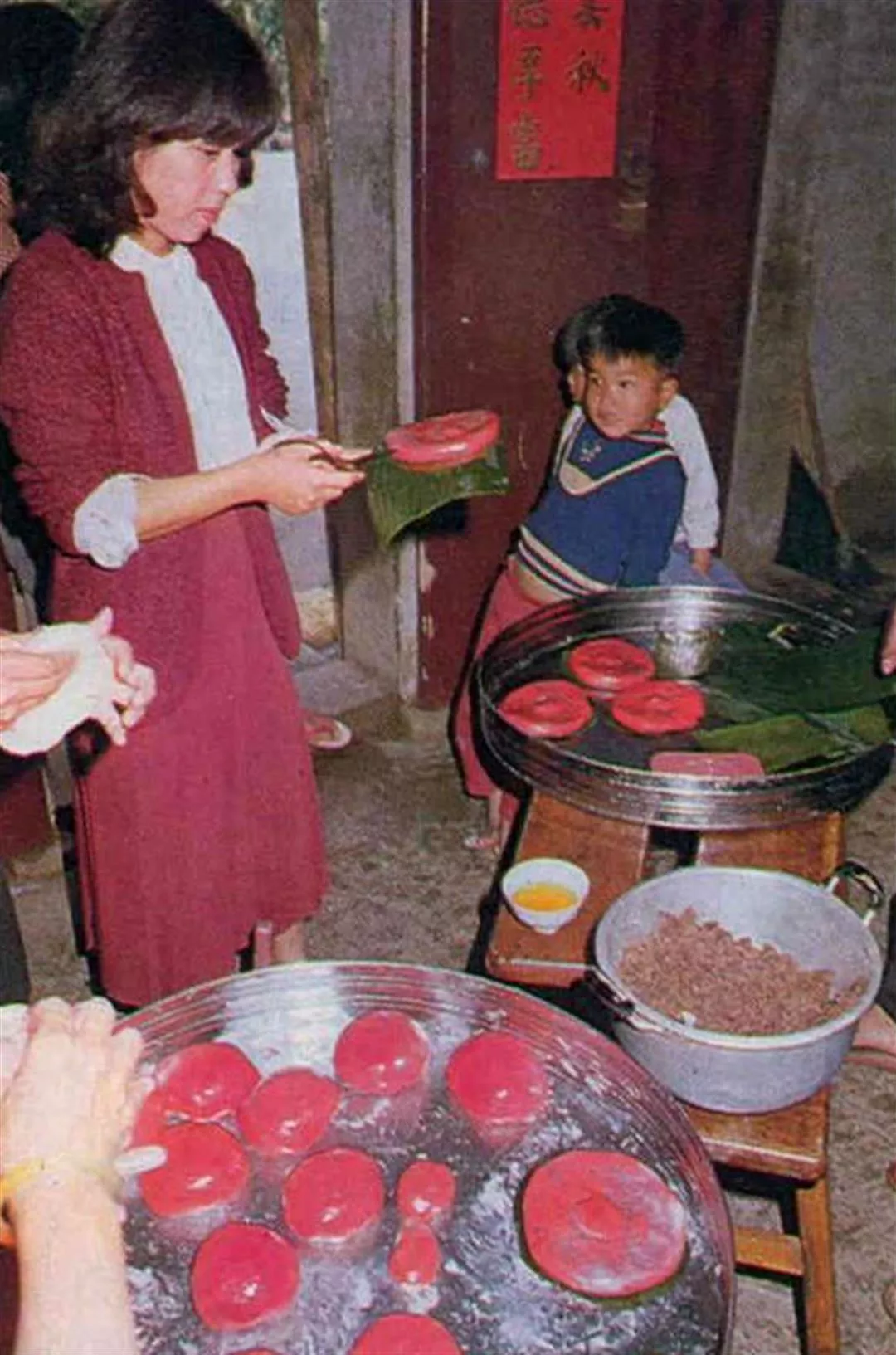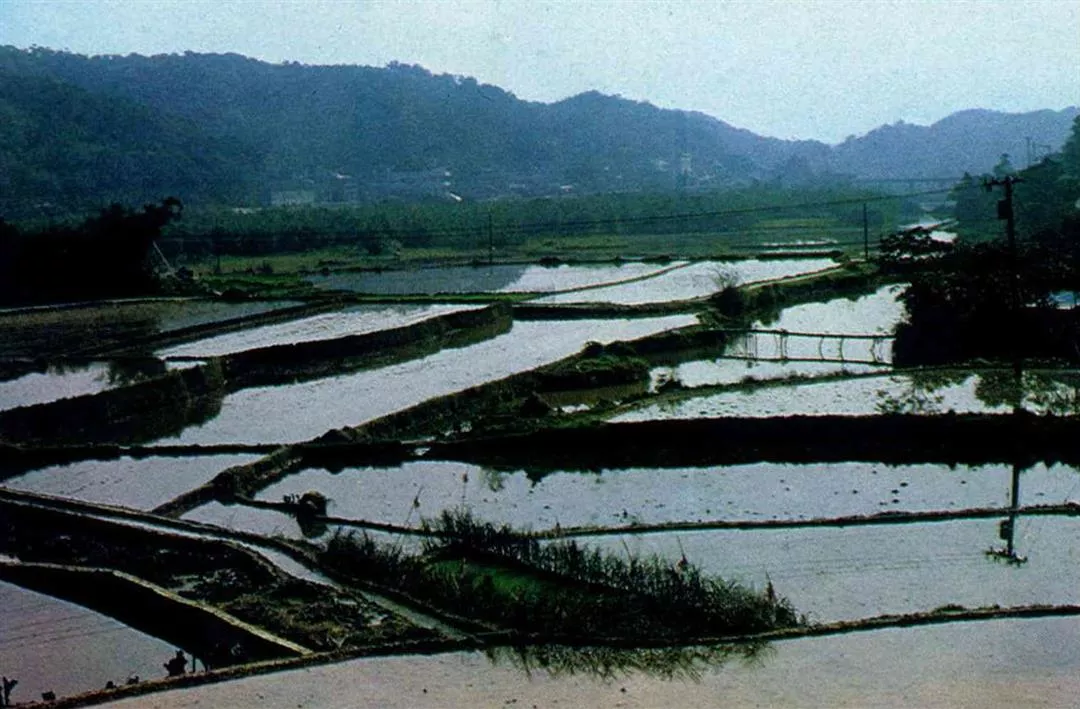Like a country girl born with beauty, Kungliao, a small township situated in northern Taiwan, possesses exquisite landscape, and simple customs and practices. Picturesque beaches, azure sea water and the spray of breaking waves clothe the village in a serene, blue dreamland.
But, before a storm sweeps the area, the sea will change from bright to dark blue. Rains, like a big net, spread down from the distant, to the near. As soon as the storm disappears, the clouds dissipate, the fog melts away and the beaches become clear and beautiful again.
Fulung village, part of Kungliao, is the major tourist attraction be cause of Fulung Beach. Every summer, thousands of people flock there. A monument to local heroes and the Santiaochiao lighthouse are major points of interest. The monument, standing on the beach, is built of rectangular stones. A stone tablet records the struggle against Japanese invaders:
"On May l, 1894, Japan sent General Kabayama Sukemori to invade Taiwan. . .Because of the weak defense along the Aoti and Yanliao coasts, Yanliao quickly fell into enemy hands. . .Lin Lee-cheng, martyr of this village, spearheaded our defense. . .From that time through Taiwan's 50-year occupation by the Japanese, people of this village shed their blood to free their land, startling the universe and moving the gods. . .We now set up this stone tablet to remember them."
About one third of Kungliao's three thousand people are engaged in the fishing industry. Aoti, Kungliao's fishing harbor, is its center. Every year, at the end of summer, schools of squid are the fishermen's major crop. Since the small squid has a habit of facing light, fishermen go out to sea at night. They use a specially designed lamp to light the sea's surface and attract the little squid. But from the 13th to 18th of every month by the lunar calendar, the fishing boats remain at anchor in the harbor, because the moonlight outshines the lamps.
Even waves, abundant rocks on the sea bed and pure water favor the growth of edible algae, abalones and other sea foods. Growing up at seaside, villagers are good swimmers and divers. In bygone days, men and women both worked at sea's edge in hot summer and cold winter, collecting laver, algae and abalones for market. The work was very difficult and dangerous. In the recent years, protected sea ponds have been built to propagate abalones and oysters on a large scale.
An old Chinese proverb says, "One must make a living in one's given circumstances." For Kungliao, next to the sea, forestry industry is also important. Especially the densely-grown bamboos.
The name "Kungliao" has a close relationship with the word, bamboo. Legend has it that, in ancient times, Kungliao was a lonely and desolate place. Few people lived there, and wild beasts appeared very often. People felled trees and bamboos to make hutlike traps to catch the animals. Kungliao was first named Kangtzuliao (hut made of wood or bamboo bars). In the Ching dynasty, the name was changed to Kungliao chuang. After Taiwan's return to China from Japanese control, it started to be called Kungliao.
The people of Kungliao adhere to traditional Chinese virtues. They believe in hard work and frugality. They help one another and are open and friendly. Most are Taoists or Buddhists, believing that "God watches three yards above the head" and "Kind deeds pay rich dividends to the doer, whereas evil will be recompensed with evil."
Old legends are still current among the village people. The "Tiger Tablet," a famous ancient relic near Kungliao, is on the border between Taipei and Ilan Counties. In the past, the road leading to the "Tiger Tablet" was the only way from Kungliao to Ilan County. The road was often afflicted by strong winds and thick fog. People were in great fear, thinking the road inhabited by evil spirits. One day, Liu Ming-teng, the provincial garrison commander of Taiwan, passed through the area. He also encountered the strange wind and mist. Liu wrote down the character for "tiger", full of vigor and vitality and ordered workers to engrave it on a stone tablet to counter the demons of the road.
Today, when people walk on the mountain road, there often comes to mind the picture of a general in full dress on a tall horse, proceeding slowly through the mist.
Since the improvement of the path, the area has attracted many hikers and tourists, coming to see the "Tiger Tablet." It is said many Japanese take the trip to copy the character on the tablet as a special souvenir. The landscape along the mountain road is beautiful, with mountain streams and the sound of water wheels. Wild ginger flowers diffuse a fine aroma. But, it is lonely. Most of the inhabitants have moved away to seek better livelihoods. Abandoned terraced farmland and broken stone houses lend an enchanted air.
At dusk, on the way back to Taipei, the red setting sun dances above the horizon at the end of the sea. Children chase along the beach, their running shadows are like pictures in a silent movie. The bus moves fast toward the south, casting away the beach, the haunted road and the setting sunshine. . .
[Picture Caption]
1.2. Kungliao township in northern Taiwan is famed for coastal scenery. 3. The San Tiao Chiao lighthouse, graces a promontory and guides shipping. 4. Every summer, thousands of people flock to Fulung Beach, Kungliao's major tourist attraction. 5. The stone tablet records the bravery of villagers of Kungliao during the Japa nese invasion.
1 . Young men maneuver kayaks in the blue waters off Fulung. 2. The Maki no bamboo is a Kungliao product especially suited for making fishing-rods. 3. Fishing and person al boats repose at anchor in Kungliao's Aoti harbor. 4. Workers repair colorfully-painted fishing boats beached for overhaul.
1. Little temples with exquisitely-decorated cornices. 2. Children silhouetted in the light of a doorway wait for a treat. 3. To celebrate happy occasions, villagers make hung kuei keh (red rice cakes), which symbolize longevity and good luck. 4. A scenic pattern is created by the criss-cross paths in this farm area. 5. The "Tiger Tablet", a famous ancient relic, guards a haunted mountain path near Kungliao. Visitors come to copy the character, valued as a special souvenir.

Kungliao township in northern Taiwan is famed for coastal scenery.

The San Tiao Chiao lighthouse, graces a promontory and guides shipping.

Every summer, thousands of people flock to Fulung Beach, Kungliao's major tourist attraction.

The stone tablet records the bravery of villagers of Kungliao during the Japa nese invasion.

Young men maneuver kayaks in the blue waters off Fulung.

The Maki no bamboo is a Kungliao product especially suited for making fishing-rods.

Fishing and person al boats repose at anchor in Kungliao's Aoti harbor.

Workers repair colorfully-painted fishing boats beached for overhaul.

Little temples with exquisitely-decorated cornices.

Children silhouetted in the light of a doorway wait for a treat.

To celebrate happy occasions, villagers make hung kuei keh (red rice cakes), which symbolize longevity and good luck.

A scenic pattern is created by the criss-cross paths in this farm area.

The "Tiger Tablet", a famous ancient relic, guards a haunted mountain path near Kungliao. Visitors come to copy the character, valued as a special souvenir.